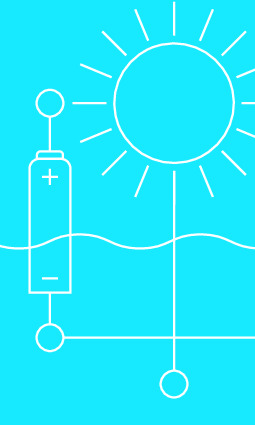|
|
|
| Module code: EE1603 |
|
|
3V+1U (4 hours per week) |
|
4 |
| Semester: 6 |
| Mandatory course: yes |
Language of instruction:
German |
Assessment:
Written exam (50%), practical exam with composition (2 lab experiments, 50%)
[updated 08.01.2020]
|
DFMEES-210 (P610-0144) Electrical Engineering - Renewable Energy and System Technology, Master, ASPO 01.10.2019
, semester 2, mandatory course, technical
EE1603 (P212-0021, P212-0022) Energy system technology / Renewable energies, Bachelor, ASPO 01.10.2022
, semester 6, mandatory course
E2606 (P211-0079, P211-0080) Electrical Engineering and Information Technology, Bachelor, ASPO 01.10.2018
, semester 6, mandatory course, technical
|
60 class hours (= 45 clock hours) over a 15-week period.
The total student study time is 120 hours (equivalent to 4 ECTS credits).
There are therefore 75 hours available for class preparation and follow-up work and exam preparation.
|
Recommended prerequisites (modules):
None.
|
Recommended as prerequisite for:
|
Module coordinator:
Prof. Dr. Michael Igel |
Lecturer: Prof. Dr. Michael Igel
[updated 16.09.2018]
|
Learning outcomes:
After successfully completing this course, students will be able to recognize the different types of star connections in electric power supply networks, evaluate the advantages and disadvantages of each and select the ideal solution on a case-to-case basis. They will be able to calculate the required equipment. Using the complex alternating current calculation and a network calculation program, they will be able to calculate voltages and currents in normal operation and assess their reliability using the applicable standards and application guidelines. Students will be able to draw up an equivalent circuit diagram of an electrical power supply network in short-circuit operation and calculate short-circuit currents and short-circuit voltages. They will be able to assess the dimensioning of the equipment used in the network. Students will be able to carry out short-circuit current calculations according to the standard or the superposition method. They will be able to compare their calculation results with those of a grid calculation program. They will be able to validate the results of the network calculation program with reference networks.
[updated 08.01.2020]
|
Module content:
1. Star connections: networks with isolated or compensated neutral point, networks with semi-rigid or rigid neutral point earthing, equivalent circuits, calculating with the aid of symmetrical components, compensation coil, degree of detuning, zero-sequence voltage 2. Operating behavior of generators: equivalent circuit diagram, steady state behavior (no-load and short-circuit operation) 3. Calculating dynamic network processes: applying symmetrical components, numerical models of equipment, short-circuit current calculation according to IEC60909, initial short-circuit alternating current, maximum aperiodic short-circuit current, breaking capacity, sustained short-circuit current, equivalent short-circuit current
[updated 08.01.2020]
|
Teaching methods/Media:
Lectures note as a PDF, projector, program for calculating electrical energy supply networks
[updated 08.01.2020]
|
Recommended or required reading:
Flosdorff, René; Hilgarth, Günther: Elektrische Energieverteilung, Teubner, (latest edition) Happoldt, Hans; Oeding, Dietrich: Elektrische Kraftwerke und Netze, Springer, 1978 Heuck, Klaus; Dettmann, Klaus-Dieter: Elektrische Energieversorgung, Springer Vieweg, (latest edition) Schlabbach, Jürgen: Elektroenergieversorgung, VDE, 2003, 2. Aufl.
[updated 08.01.2020]
|


